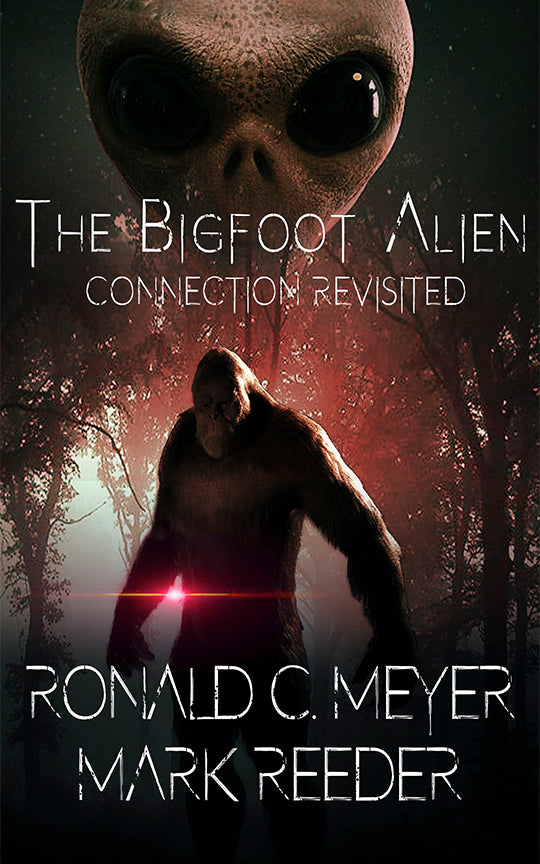Mysteries of Kentucky's Legendary Bigfoot

By Ava Martinez, Cryptozoologist
In the heart of the Bluegrass State, amidst the rolling hills and dense forests, a legend has persisted for generations. It's a tale of a creature that walks the line between myth and reality, captivating the imaginations of locals and visitors alike. This is the story of Kentucky's Bigfoot, a mysterious and elusive being that has left an indelible mark on the state's folklore and culture.
As a cryptozoologist and biology teacher, I have long been fascinated by the enduring allure of Bigfoot and the countless sightings reported across the United States. However, there is something uniquely compelling about the Bigfoot phenomenon in Kentucky. The sheer volume of encounters, the rich history of the legend, and the dedicated efforts of researchers and enthusiasts have solidified the state's reputation as a hotbed for Sasquatch activity.
In this article, we will embark on a journey to uncover the mysteries surrounding Kentucky's legendary Bigfoot. We will delve into the early days of sightings, explore the most notable encounters, and examine the evidence that has been collected over the years. Through this exploration, we will gain a deeper understanding of why Kentucky has become a prime location for potentially groundbreaking discoveries in the field of cryptozoology.
The Early Days of Kentucky Bigfoot Sightings
The history of Bigfoot sightings in Kentucky stretches back decades, with some of the earliest documented encounters dating back to the 1960s. One such incident occurred in the small town of Olive Hill, where a group of teenagers claimed to have spotted a seven-foot-tall, hair-covered creature lurking in the woods. The encounter was so frightening that the teens fled the area and refused to return for some time.
This early sighting set the stage for what would become a recurring theme in Kentucky's Bigfoot lore: encounters with massive, bipedal creatures covered in dark, shaggy hair. In the 1970s, another terrifying encounter was reported by a man named Gary Smith while hunting near Mount Vernon. Smith described seeing an eight-foot-tall creature with broad shoulders and a heavy, muscular build. The creature allegedly emitted a foul odor and let out a series of chilling screams, causing Smith to flee in terror.
As the years passed, the Mammoth Cave area became a hotspot for Bigfoot activity. During the 1980s, several campers claimed to have seen a creature that bore a striking resemblance to the one depicted in the famous Patterson-Gimlin film, which purportedly shows a female Bigfoot walking through the woods of Northern California. These sightings added to the growing body of evidence suggesting that Kentucky was home to a thriving population of Sasquatch.
The Legend of the Spottsville Monster
One of the most infamous chapters in Kentucky's Bigfoot history revolves around the legend of the Spottsville Monster. In 1975, the Nunnelly family, residing in the small town of Spottsville, reported being terrorized by a group of eight-foot-tall creatures. The family's harrowing encounters made headlines and were even featured on national television shows, cementing the Spottsville Monster's place in the annals of cryptozoology.
The media coverage surrounding the Spottsville Monster case was extensive, with reporters and curiosity-seekers descending upon the small town in droves. The Nunnelly family's accounts were both terrifying and compelling, describing creatures with glowing red eyes, foul odors, and an imposing stature. Despite the skepticism of some, the legend of the Spottsville Monster persisted, becoming an integral part of the local folklore.
The impact of the Spottsville Monster on the community cannot be overstated. Many residents firmly believed in the creature's existence, and the legend became a source of both fear and fascination. Even today, decades after the initial sightings, the Spottsville Monster remains a topic of discussion and speculation among those who call the area home.
The Kentucky Bigfoot Research Organization (KBRO)
In 1997, Charlie Raymond, a dedicated Bigfoot researcher, founded the Kentucky Bigfoot Research Organization (KBRO) with the mission of documenting, investigating, and protecting the state's Sasquatch population. Raymond's passion for the subject and his commitment to rigorous research have made the KBRO a leading force in the field of cryptozoology.
Over the years, the KBRO has amassed an impressive database of more than 400 reported Bigfoot encounters from across the state. This wealth of information has allowed researchers to identify patterns and trends in sighting locations, creature descriptions, and behavioral characteristics. The organization's meticulous record-keeping and thorough investigation protocols have set a high standard for Bigfoot research worldwide.
The KBRO's efforts extend far beyond mere data collection. The organization conducts regular expeditions and field investigations, venturing into the heart of Kentucky's wilderness in search of evidence. These dedicated researchers employ a variety of techniques, including audio recording, thermal imaging, and track casting, to gather as much information as possible about the elusive creatures.
Notable KBRO Investigations and Encounters
Among the hundreds of reports in the KBRO's database, several stand out as particularly compelling examples of Kentucky's Bigfoot phenomenon. In 2009, a young man named John had a close encounter with a wolf-faced creature in Lee County. John described the creature as being over six feet tall, covered in shaggy brown and gray fur, and possessing a face that resembled a wolf more than a human. The sighting left a lasting impression on John and solidified his belief in the existence of Bigfoot.
Another notable incident occurred in Edmonson County in 2014, involving a 16-year-old boy named Elijah. While driving home with his mother late one night, Elijah spotted a massive, dark-colored creature standing by the side of the road. The creature was estimated to be at least 6'8" tall, with glowing eyes and a body that was three times broader than Elijah's own substantial frame. The encounter was so shocking that it transformed Elijah from a skeptic to a firm believer in the existence of Bigfoot.
In addition to these individual sightings, the KBRO has collected a wealth of evidence that points to the presence of Bigfoot in Kentucky. Strange vocalizations, wood knocks, and other unusual activity have been reported by numerous witnesses, suggesting that these creatures communicate with one another and interact with their environment in ways that are not yet fully understood.
Physical evidence, such as footprint casts, audio recordings, and thermal imaging footage, has also been gathered by the KBRO over the years. While some of this evidence remains inconclusive, it has contributed to the growing body of knowledge surrounding Kentucky's Bigfoot population and has fueled further research and investigation.
Kentucky's Bigfoot Hotspots
Through their extensive research and data collection, the KBRO has identified several counties in Kentucky that seem to be hotspots for Bigfoot activity. Anderson, Carter, Henderson, and Daviess counties have all reported a disproportionately high number of sightings, suggesting that these areas may be particularly attractive to the creatures.
One of the key factors that make these counties ideal Bigfoot habitat is the abundance of forests, water sources, and rugged terrain. The dense woodlands provide ample cover and resources for the creatures, while the numerous rivers, streams, and lakes ensure a steady supply of water and potential food sources. The remote and often inaccessible nature of these areas also allows Bigfoot to remain hidden from human encroachment.
Two of the most well-known locations associated with Kentucky's Bigfoot legend are Mammoth Cave National Park and the Red River Gorge. Both of these areas have been the site of numerous sightings and encounters over the years, and they continue to attract researchers and enthusiasts from around the world.
Interestingly, some researchers have noted potential connections between Kentucky's Bigfoot and other legendary creatures in the state, such as the Midnight Whistler of Edmonson County and the Beast of LBL (Land Between the Lakes). While the exact nature of these relationships remains unclear, the possibility of a broader ecosystem of cryptids in Kentucky is an intriguing one that warrants further investigation.
The Growing Kentucky Bigfoot Community
As interest in Kentucky's Bigfoot phenomenon has grown, so too has the community of researchers, enthusiasts, and believers who are dedicated to uncovering the truth behind the legend. This community is diverse, passionate, and deeply committed to sharing knowledge and experiences related to the Bluegrass State's most famous cryptid.
One of the most visible manifestations of this community is the proliferation of annual festivals and conventions that celebrate Kentucky's Bigfoot legacy. Events like the Wildman Days festival in Lawrenceburg, the Cryptid Con in Lexington, and the Bigfoot Basecamp Weekend at Pleasant Hill Lake Park draw thousands of attendees each year, providing a platform for researchers to share their findings, witnesses to recount their encounters, and enthusiasts to connect with like-minded individuals.
Among the most prominent figures in the Kentucky Bigfoot community are researchers like Tom Shay and Charlie Raymond. Shay, the founder of the Northern Kentucky Bigfoot Research Group, has been investigating the creature for decades and has collected a wealth of evidence, including footprint casts and eyewitness accounts. Raymond, as previously mentioned, is the driving force behind the KBRO and has become a leading authority on the subject through his tireless research and dedication.
The Kentucky Bigfoot community has also forged connections with national organizations, such as the Bigfoot Field Researchers Organization (BFRO), and has been featured on popular television shows like Animal Planet's "Finding Bigfoot" and the Travel Channel's "Expedition Bigfoot." These collaborations have helped to raise the profile of Kentucky's Bigfoot phenomenon and have brought new resources and expertise to the ongoing investigation.
Perhaps most importantly, the Bigfoot legend has become an integral part of Kentucky's cultural identity and folklore. The creature's enduring mystery and the passion of those who seek to uncover its secrets have captured the imaginations of generations of Kentuckians, ensuring that the legacy of the Bluegrass State's most famous cryptid will continue to thrive for years to come.
Evidence and Skepticism
Despite the wealth of eyewitness accounts, physical evidence, and dedicated research efforts, the existence of Bigfoot in Kentucky remains a topic of intense debate and skepticism. While believers point to the consistency and credibility of sighting reports, as well as the variety of creature descriptions, as evidence of the creature's reality, skeptics argue that the lack of conclusive proof leaves room for doubt.
One of the most compelling aspects of Kentucky's Bigfoot sightings is the consistency of eyewitness accounts. Many reports describe creatures that are remarkably similar in size, shape, and behavior, with witnesses often noting the creature's towering stature, shaggy hair, and powerful build. The fact that these descriptions have remained largely unchanged over decades, despite the evolution of popular culture and the influence of media portrayals, suggests that witnesses are reporting genuine experiences rather than simply repeating well-known tropes.
However, skeptics point out that eyewitness testimony is notoriously unreliable and can be influenced by a variety of factors, including memory, perception, and cultural expectations. They argue that without concrete physical evidence, such as a body or DNA sample, it is impossible to definitively prove the existence of Bigfoot in Kentucky or anywhere else.
The physical evidence that has been collected by researchers, including footprint casts, audio recordings, and thermal imaging footage, is also subject to debate. While some experts believe that this evidence points to the presence of an unknown primate species in Kentucky's forests, others maintain that it can be explained by misidentifications, hoaxes, or natural phenomena.
One of the most intriguing pieces of potential evidence to emerge in recent years is the alleged discovery of Bigfoot DNA in Kentucky. In 2013, the Erickson Project, led by researcher Adrian Erickson, claimed to have obtained genetic material from a Bigfoot in the state. While the findings were controversial and have not been widely accepted by the scientific community, they have nonetheless fueled ongoing interest and speculation about the possibility of conclusive proof.
Ultimately, the debate surrounding Kentucky's Bigfoot phenomenon is likely to continue until definitive evidence is discovered. Until then, researchers, enthusiasts, and skeptics alike will continue to investigate, analyze, and argue about the nature and reality of the Bluegrass State's most famous cryptid.
The Future of Kentucky Bigfoot Research
As the search for Kentucky's Bigfoot continues, researchers and enthusiasts are increasingly turning to advanced technologies and innovative investigative techniques to uncover the truth behind the legend. From high-resolution trail cameras and drone surveys to environmental DNA analysis and advanced audio recording equipment, the tools available to Bigfoot hunters are becoming more sophisticated and powerful with each passing year.
One of the most promising avenues for future research is the use of environmental DNA (eDNA) sampling to detect the presence of unknown species in Kentucky's forests. By collecting soil, water, and other environmental samples and analyzing them for genetic material, researchers may be able to identify the DNA of Bigfoot or other cryptids without the need for direct physical evidence.
Another area of focus for Kentucky Bigfoot researchers is the development of more rigorous and standardized investigative protocols. By establishing clear guidelines for evidence collection, documentation, and analysis, investigators can ensure that their findings are as reliable and credible as possible. This, in turn, can help to build a stronger case for the existence of Bigfoot and encourage greater collaboration and data sharing among researchers.
Collaboration between Bigfoot researchers, scientific institutions, and government agencies is also likely to play an increasingly important role in the future of Kentucky Bigfoot research. By working together to share resources, expertise, and data, investigators can maximize their chances of making groundbreaking discoveries and advancing our understanding of this elusive creature.
Ultimately, the future of Kentucky Bigfoot research will be shaped by the passion, dedication, and ingenuity of those who are committed to uncovering the truth behind the legend. Whether through the application of cutting-edge technologies, the development of new investigative strategies, or the forging of new partnerships and collaborations, the search for the Bluegrass State's most famous cryptid is sure to continue for generations to come.
The Enduring Mystery and Allure of Kentucky Bigfoot
Despite decades of research, investigation, and debate, the mystery of Kentucky's Bigfoot remains as captivating and alluring as ever. The creature's ability to evade definitive detection, while simultaneously leaving tantalizing clues and inspiring countless eyewitness accounts, has cemented its place in the annals of cryptozoology and captured the imaginations of people around the world.
At its core, the enduring fascination with Kentucky Bigfoot is a testament to the power of mystery and the human desire to explore the unknown. The idea that a large, intelligent, and undiscovered primate species could be living in the forests of the Bluegrass State challenges our understanding of the natural world and invites us to consider the possibilities that lie beyond the boundaries of conventional science.
For many Kentuckians, the Bigfoot legend is more than just a curiosity or a source of entertainment; it is a deeply ingrained part of the state's cultural identity and heritage. The creature's presence in local folklore, art, and popular culture reflects the enduring connection between the people of Kentucky and the wild, untamed landscapes that define the state's natural beauty.
From Bigfoot to UFOs: Hangar 1 Publishing Has You Covered!
Explore Untold Stories: Venture into the world of UFOs, cryptids, Bigfoot, and beyond. Every story is a journey into the extraordinary.
Immersive Book Technology: Experience real videos, sights, and sounds within our books. Its not just reading; its an adventure.



























